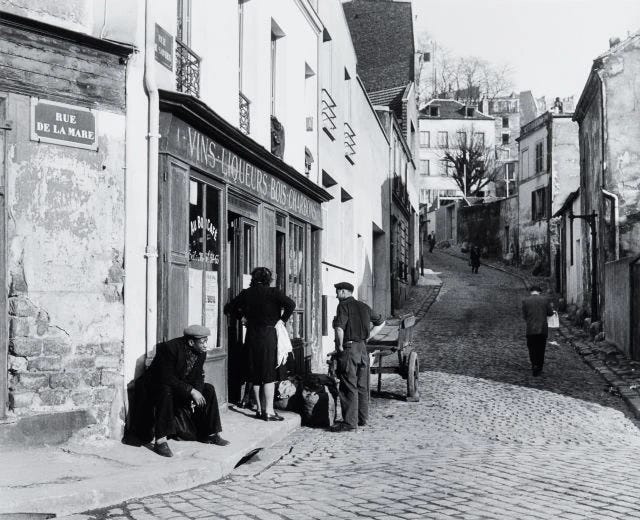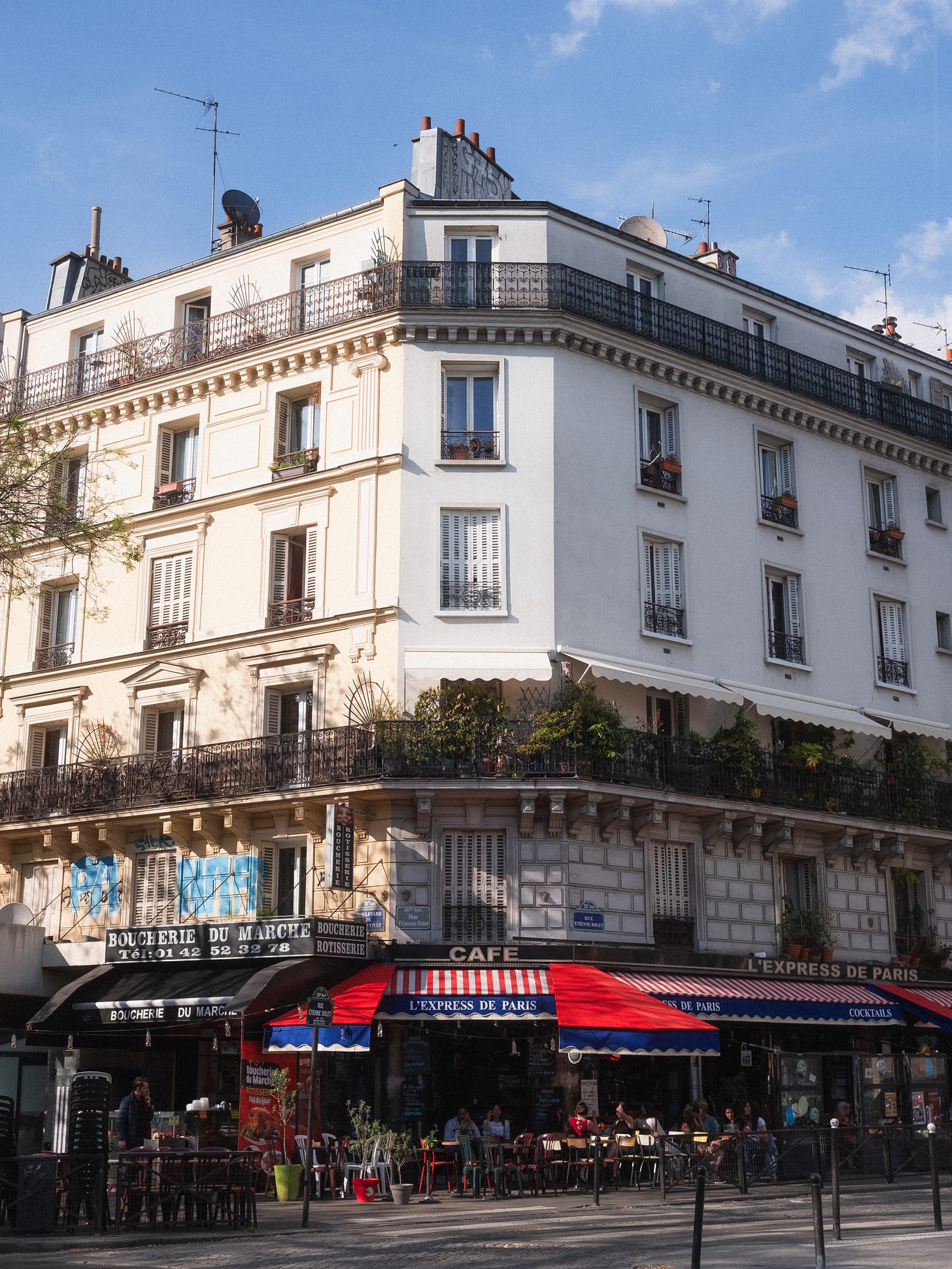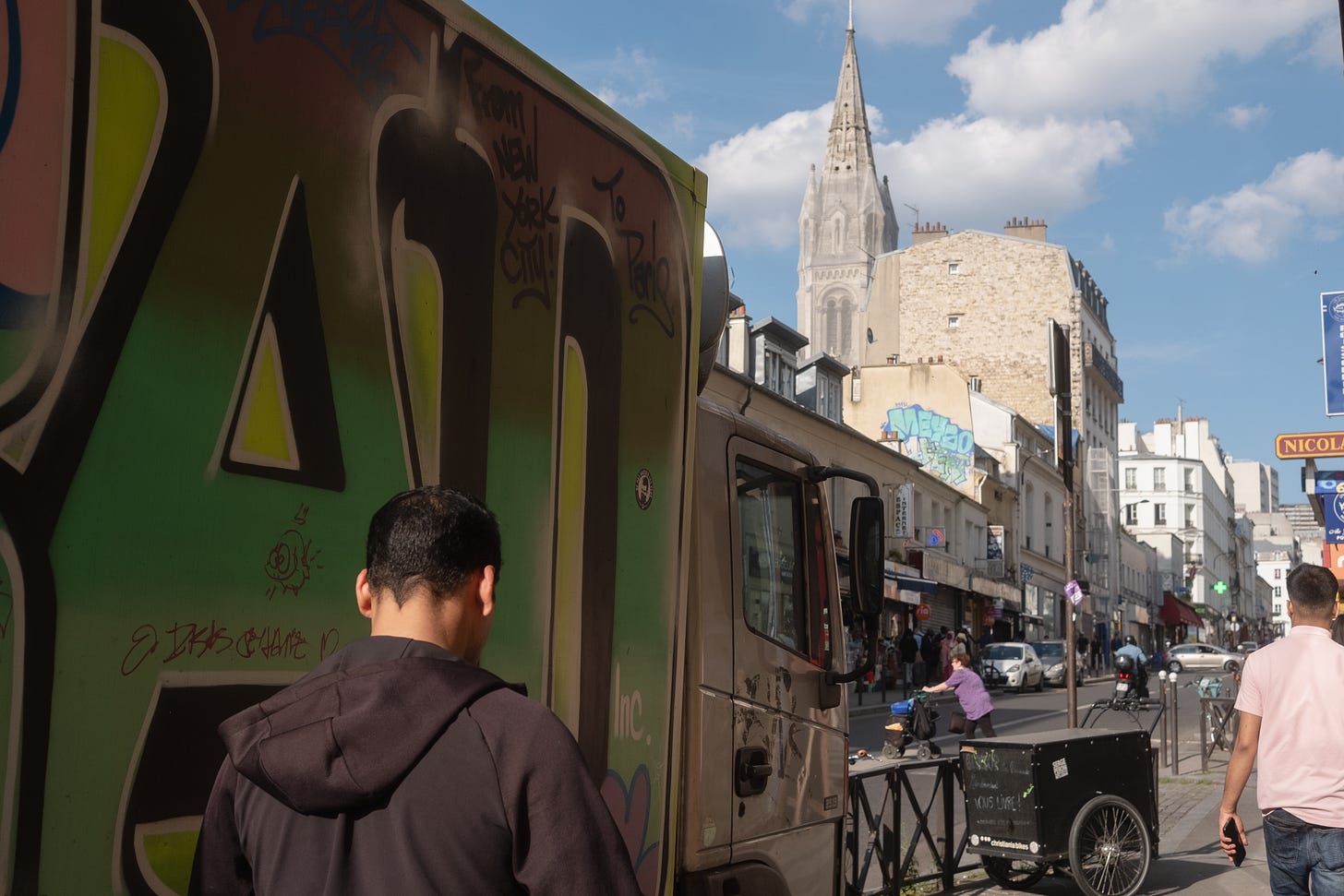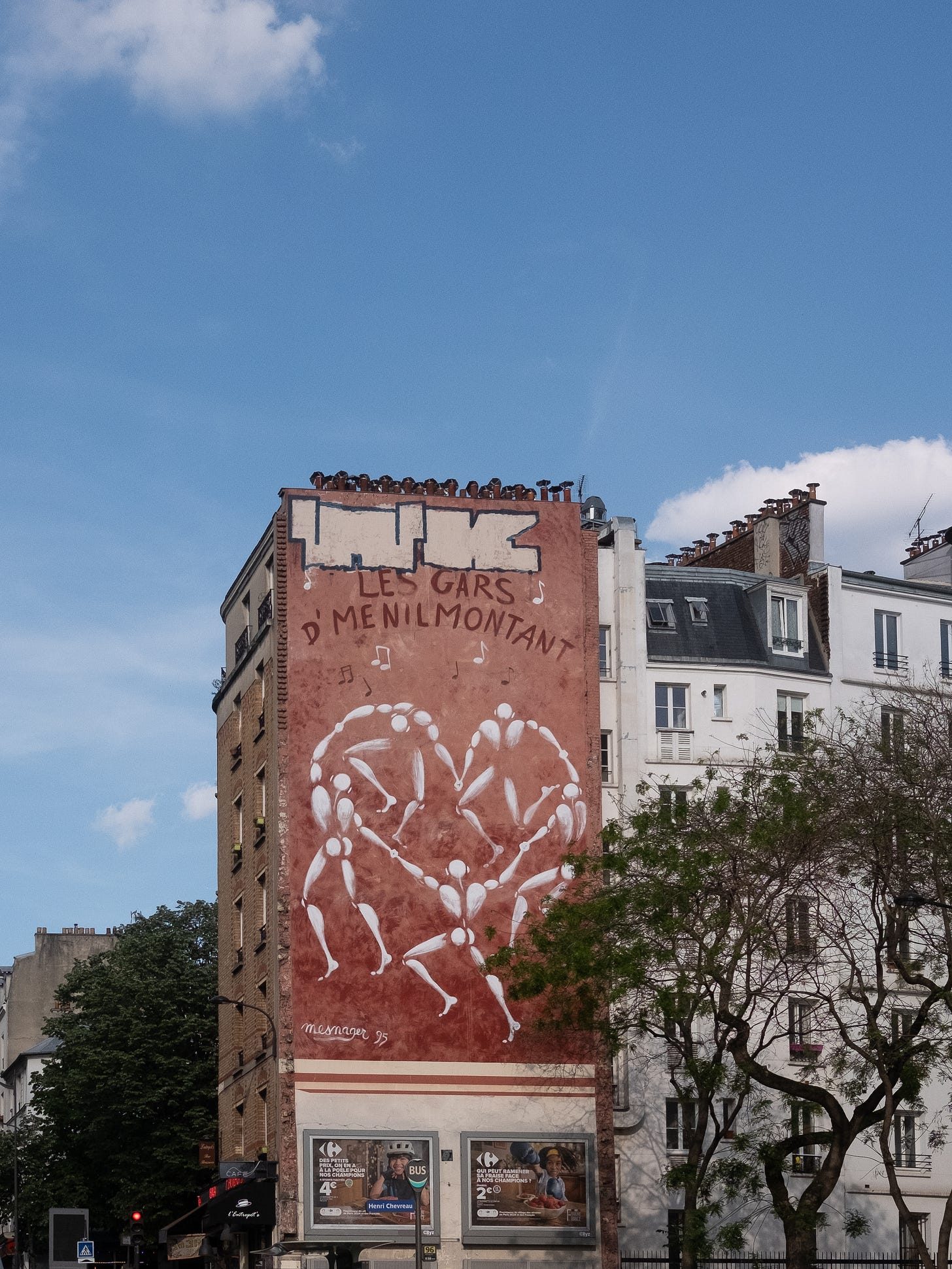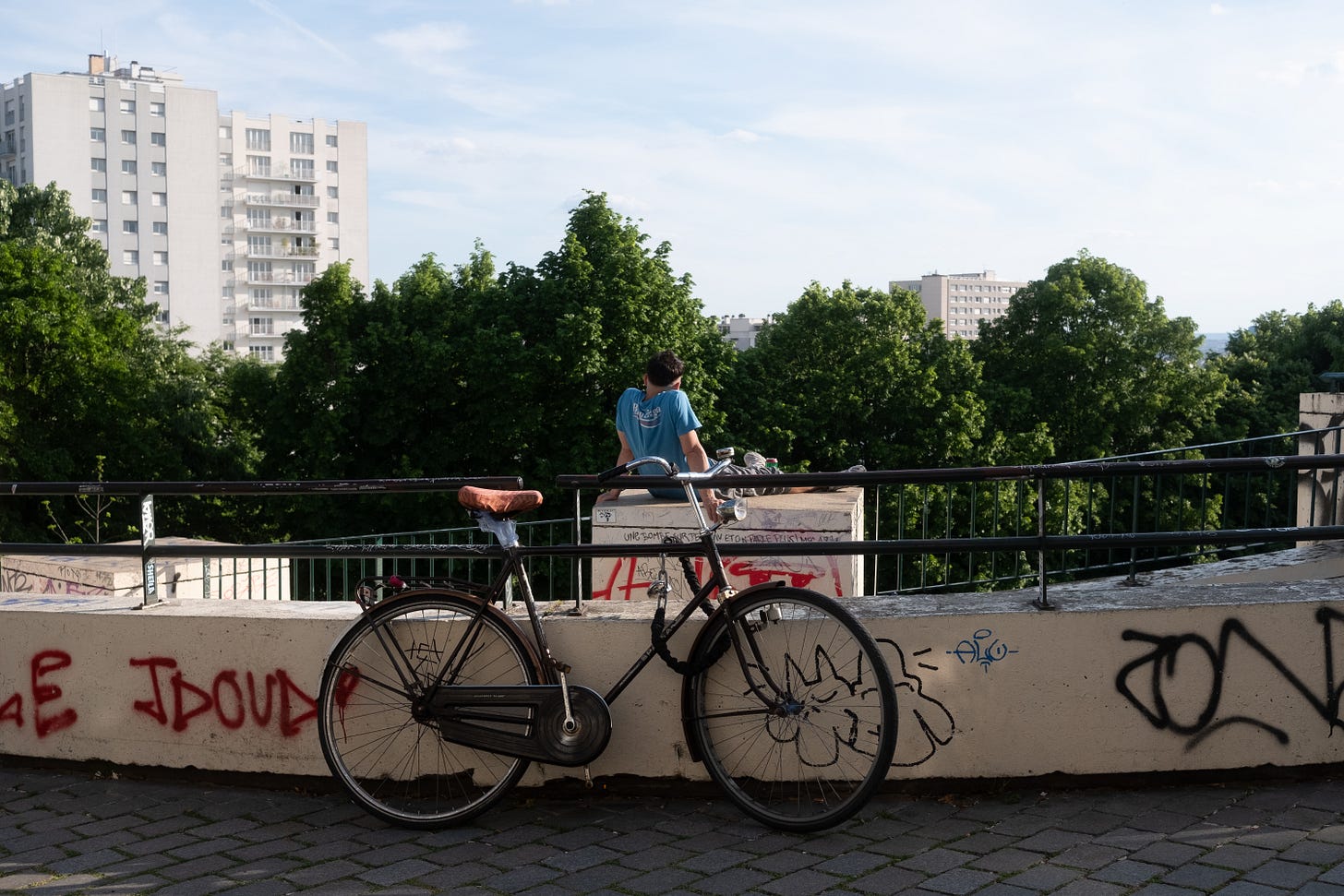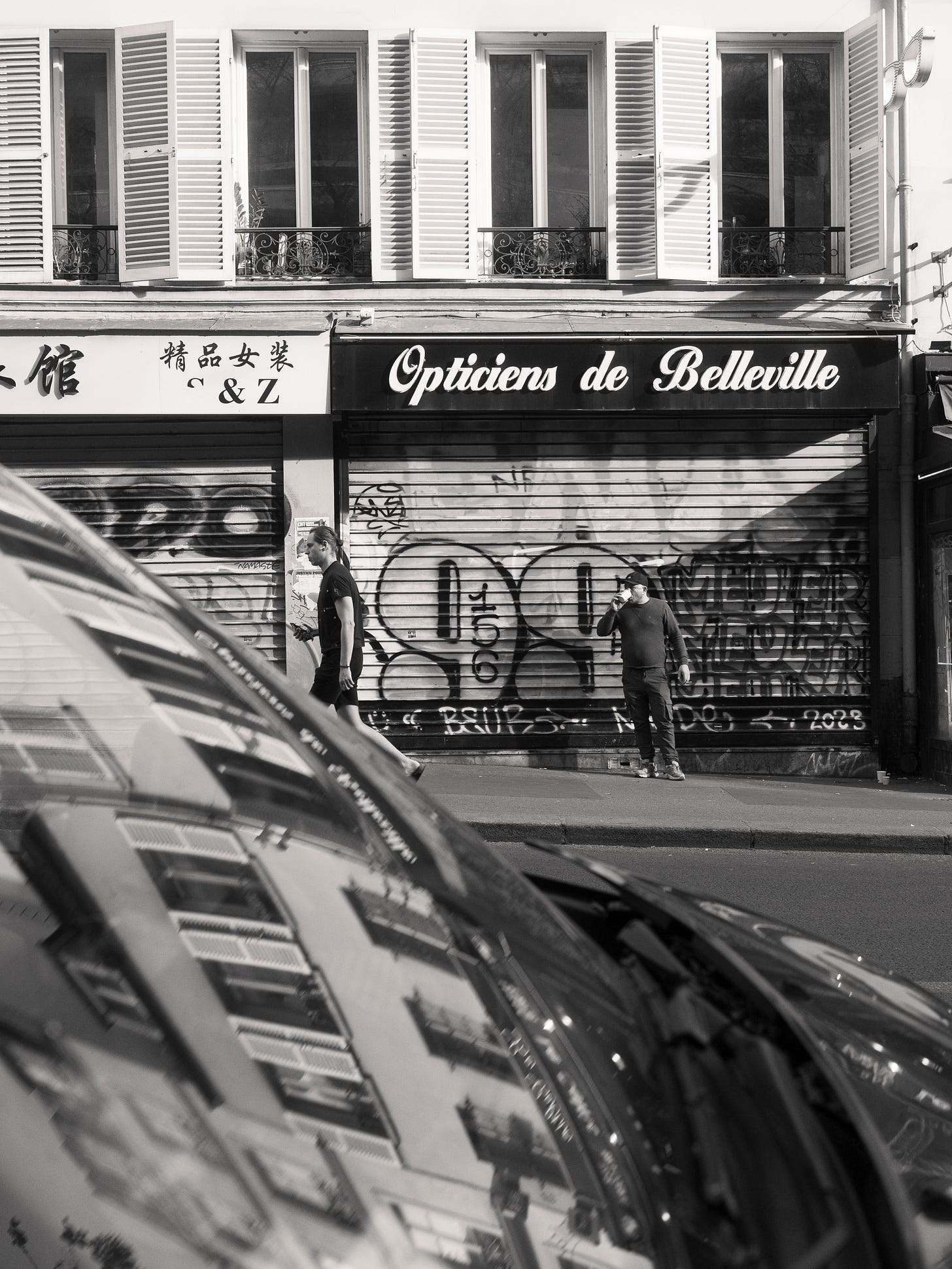A bygone Paris: on Belleville and Willy Ronis
A historic trip through the Belleville neighbourhood photographed by Willy Ronis
For best results, play this song while reading
Belleville
Chaotic, smelly, and sometimes beautiful, Belleville is a neighbourhood in the north east of Paris. This messy area doesn’t quite fit the polished and romantic image of Paris that, as outsiders, we collectively imagine. The one where you are strolling through charming cobblestone streets half drunk from your afternoon wine, admiring the architecture, and thinking that adding your own lock on the Pont des Arts will forever change your love life. The Eiffel tower is never too far away and Edith Piaf’s La Vie en Rose is your constant soundtrack.
No city is romanticized quite like Paris. So much so, that a Paris syndrome exists, affecting those searching for a wishful vision constructed in their minds that doesn’t actually exist.
Outside the pretty and polished neighbourhoods of the center of Paris, Belleville is known as a haven for artists, immigrants, and rebels alike. Here, the buildings are canvases for street art and murals are as high as its young residents hanging out on street corners.
Belleville has a rich history between popular revolts and successive waves of immigration that results in the diverse neighbourhood of today. Historically, it was a working class independent commune that was annexed by Paris in 1860. At the start of the 19th century, Belleville was a small village with 2500 people, somewhat isolated from Paris. The wine was cheap and the cabarets full, or so I’ve heard. Belleville formed a distinct local identity, and arguably a different accent that can still be heard in older bars of the neighbourhood.
In the middle of the 20th century, it underwent some development as part of a wider wave of modernisation in Paris after WWII. Old cottages gave way to modern 10 story buildings. Some of the bistros, cinemas, and artist workshops were replaced with buildings with less character. But some other areas remained untouched, creating the blend of old and new we can still see today.
If you get off at the Couronnes metro station, you are greeted with a mix of Asian restaurants, Arab pastry shops, and French boulangeries. Of course, hipster coffee shops are never faraway. The area maintains a small village feel for its residents in the middle of Paris. It feels both timeless and ever-changing.
Willy Ronis
The sense of time stand still in Belleville is what attracted Willy Ronis to the neighbourhood after a first visit in 1947. Ronis is part of the humanist photography movement of the 1950s and termed “the photographer of Paris par excellence” by the Oxford Companion to the Photograph.
Over the years, Ronis kept visiting Belleville and its neighbouring Menilmontant to photograph and document the simple way of life, and in the process created a visual journal of a Paris that doesn’t exist anymore. He published his first book, Belleville Menilmontant, in 1954. Today, you can see some of his photographs hung on the neighbourhood walls where they were once taken.
Ronis’ photography focuses on beauty in everyday life. He says:
Knowing how to discover beauty wherever it is found and it is found almost everywhere when we know how to look
I have never sought out the extraordinary or the scoop. The beauty of the ordinary was always the source of my greatest emotions.
To close, here are some photos in the Belleville-Menilmontant area from last week
If you want to feel some nostalgia for a past Belleville, the short-film The Red Ballon offers some scenes from the 1950s exclusively filmed there.
See you next week!








